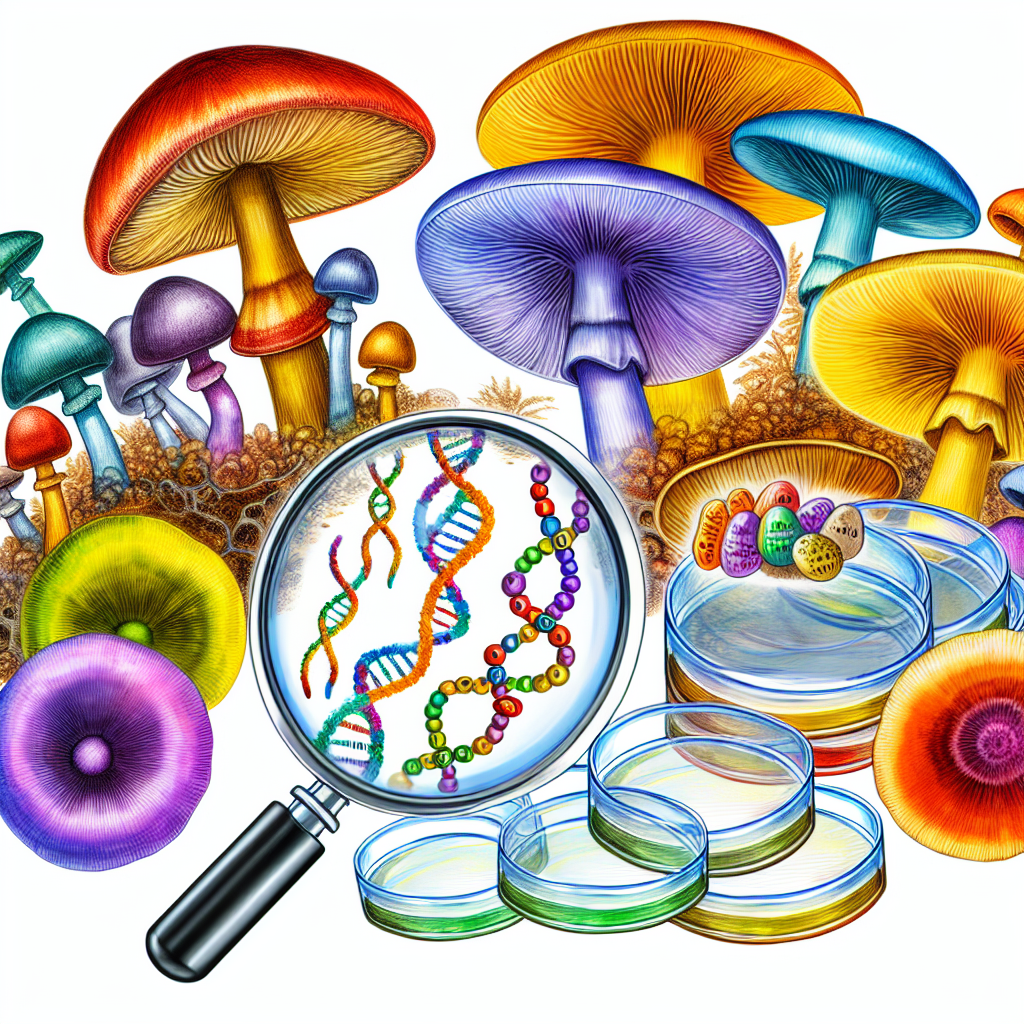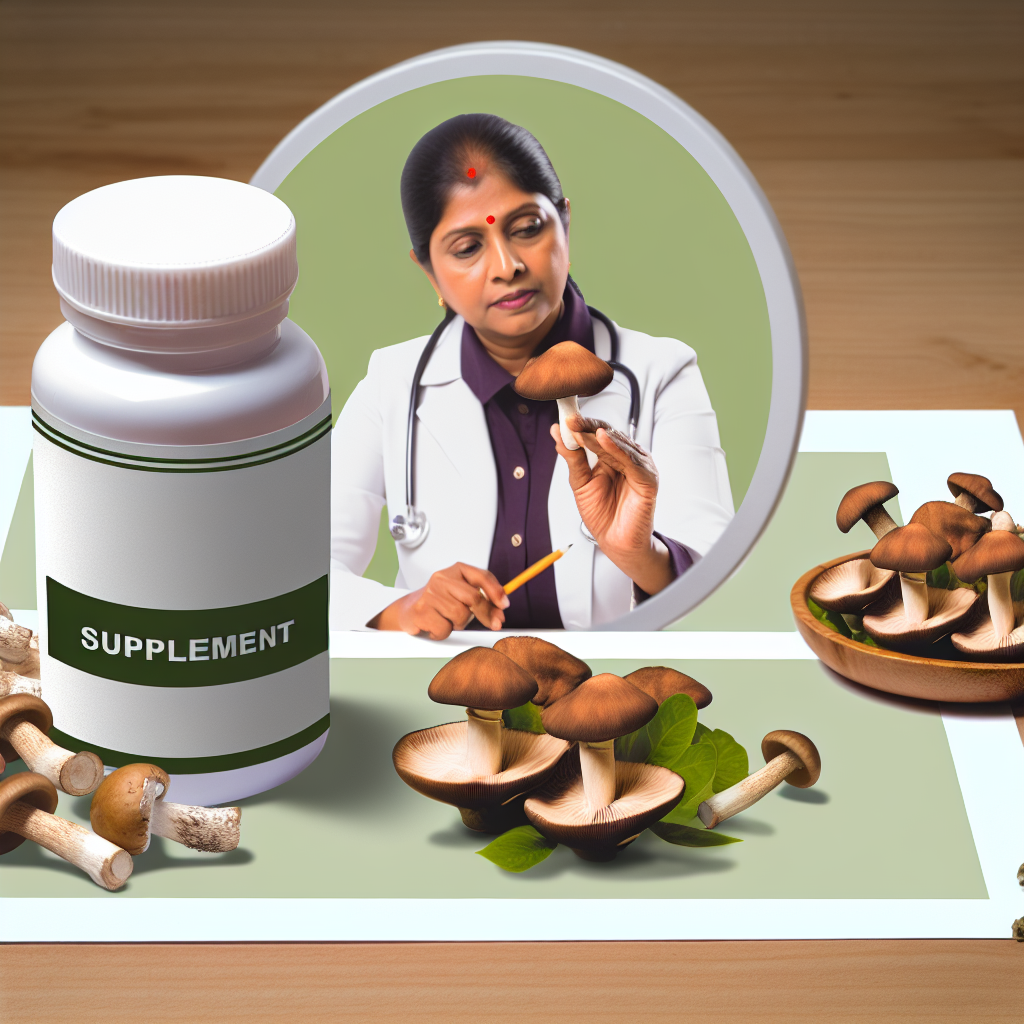Mushroom Genetics and Strain Selection: Isolating Desired Traits
Introduction
The resurgence of interest in **medicinal mushrooms**, particularly psilocybin-producing species, has led to a new era of scientific exploration and cultivation precision. For centuries, psychedelic mushrooms were revered by indigenous cultures for their spiritual and healing properties. In recent years, modern science has begun to unravel the intricate genetics of mushrooms and their implications for therapeutic use.
With clinical studies showing promise in treating conditions like depression, anxiety, PTSD, and addiction, the importance of identifying and cultivating the most effective psilocybin mushroom strains has grown significantly.
The genetic profile of psychedelic mushrooms dictates more than just physical attributes like size and growth rate. It also influences the production of psychoactive and therapeutic compounds such as **psilocybin**, **psilocin**, **baeocystin**, **norbaeocystin**, and other synergistic alkaloids. Utilizing advanced techniques—including selective breeding, spore isolation, tissue culture, and **CRISPR** gene editing—researchers and cultivators can now isolate and enhance important traits to create consistent, efficacious mushrooms for therapeutic applications.
Beyond potency, factors like therapeutic predictability, contamination resistance, yield stability, and metabolic expression are essential. This field mirrors the evolution of cannabis research, where personalized medicine depends on understanding chemical diversity across strains. By identifying and stabilizing these genetic traits, scientists can pave the way for clinical-grade mushrooms suited to specific mental health needs or microdosing protocols.
A key to success in therapeutic applications is genetic stability. Stable mushroom strains ensure reproducible outcomes across generations—critical for standardizing treatments. As this field advances, the integration of genetics, strain selection, and clinical efficacy promises to offer a biologically informed approach to mental health and neurological healing.
Features and Scientific Insights
The genetic complexity of psilocybin mushrooms is profound. Even strains within the same species can exhibit vastly different chemical, visual, and therapeutic profiles. A pivotal study in Nature Ecology & Evolution revealed how **horizontal gene transfer** allows the psilocybin-producing gene cluster to jump between species, enhancing mushroom diversity and emphasizing the need for careful genetic stabilization (Reynolds et al., 2018).
Clinically, the balance of psilocybin, psilocin, and minor alkaloids directly influences the subjective experience. According to a 2021 study from Frontiers in Psychiatry, variations in compound ratios—like psilocin-to-psilocybin ratios—among different Psilocybe cubensis strains affected therapeutic outcomes. These findings confirm the need for chemically and genetically consistent strains to ensure both efficacy and safety (Atoyan et al., 2021).
Cultivation Methods
To isolate preferred traits, cultivators rely on several advanced techniques:
– Monokaryotic strain isolation: Spores are germinated singly to identify highly vigorous and genetically distinct strains. These are analyzed for potency, morphology, and robustness through successive fruiting trials.
– Tissue culture cloning: Enables the multiplication of a known high-performing mushroom, reducing the chances of mutation and preserving traits over generations.
– Spore-to-spore crossings: Breeding selections that combine positive traits found in different genotypes.
In addition, cultivators are exploring hybrid crosses and creating composite strains to combine desired therapeutic effects with environmental resilience and yield efficiency.
Gene Editing and Synthetic Biology
With the introduction of CRISPR-Cas9 and other genomic editing tools, researchers are exploring deeper interventions. A 2022 study in Cell Reports discussed engineered transcriptional regulators that optimize psilocybin biosynthesis while limiting undesirable alkaloids (Zhang et al., 2022). This innovation marks a turning point—from simply selecting strains to actively designing them.
Environmental Epigenetics
Beyond genetics, environmental factors can dramatically influence mushroom chemistry—a concept known as epigenetics. Elements such as:
– Substrate composition
– Temperature and humidity
– Light exposure
…can cause cloned strains to express different alkaloid levels. This highlights the complex interaction between genetics and cultivation conditions, similar to how pharmacogenomics examines gene-environment interplay in humans. Controlled environments and growth parameters will be crucial for producing standardized therapeutic fungi.
Toward Medical Standardization
As clinical trials for psilocybin become increasingly widespread and receive greater regulatory support—including the FDA’s Breakthrough Therapy designation—the demand for standardized, strain-specific medications is exploding.
In the near future, we might see strain-specific prescriptions designed to match individual metabolic profiles, brain chemistry, and therapeutic goals. Just as modern medicine has evolved to personalize antidepressant use, mushroom therapy may soon be tailored to the patient level.
Conclusion
Mushroom genetics and strain selection are at the heart of a transformative revolution in psychedelic-assisted therapy. By isolating key traits—such as compound profiles, therapeutic consistency, and resilience—scientific research is moving the mushroom from folklore to pharmacology.
As genetic tools and cultivation expertise advance, so too does our ability to create reliable, effective, and safe natural medicines. Understanding the DNA that shapes a psilocybin mushroom is no longer the domain of academic curiosity—it is essential to unlocking the next frontier in personalized mental health treatment.
References
– Reynolds et al. (2018), Nature Ecology & Evolution: Horizontal gene cluster transfer increased hallucinogenic mushroom diversity.
– Atoyan et al. (2021), Frontiers in Psychiatry: Psychopharmacological profiling of psilocybin mushroom extracts.
– Zhang et al. (2022), Cell Reports: Engineering transcriptional regulators to tune psilocybin biosynthesis in fungi.
– FDA Breakthrough Therapy Designation (2020)
Shroomfan.com remains at the forefront of psilocybin science—bridging mycology and medicine with updated research, genetics tools, and cultivation methods.
Concise Summary
The scientific pursuit of optimizing medicinal mushrooms, particularly psilocybin-producing species, relies heavily on understanding their genetics and strain-specific traits. From spore isolation to gene editing, researchers are harnessing the biological diversity of mushrooms to cultivate strains with targeted therapeutic effects. Genetic stability and environmental epigenetics play critical roles in standardizing medicinal outcomes. As psilocybin gains traction in clinical contexts, especially with FDA support, precision in strain selection may soon enable personalized, effective natural therapies for mental health.

Dominic E. is a passionate filmmaker navigating the exciting intersection of art and science. By day, he delves into the complexities of the human body as a full-time medical writer, meticulously translating intricate medical concepts into accessible and engaging narratives. By night, he explores the boundless realm of cinematic storytelling, crafting narratives that evoke emotion and challenge perspectives. Film Student and Full-time Medical Writer for ContentVendor.com




